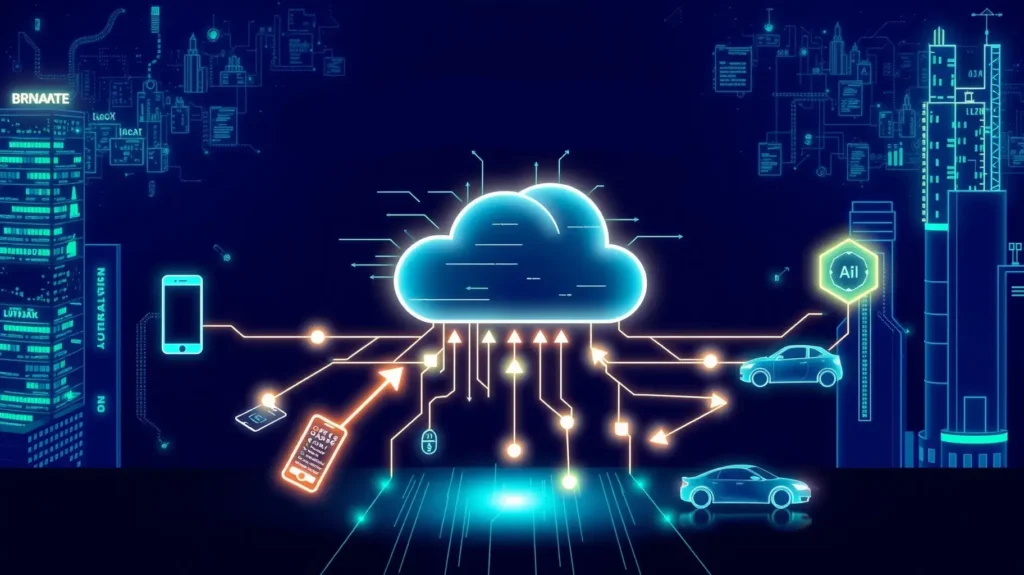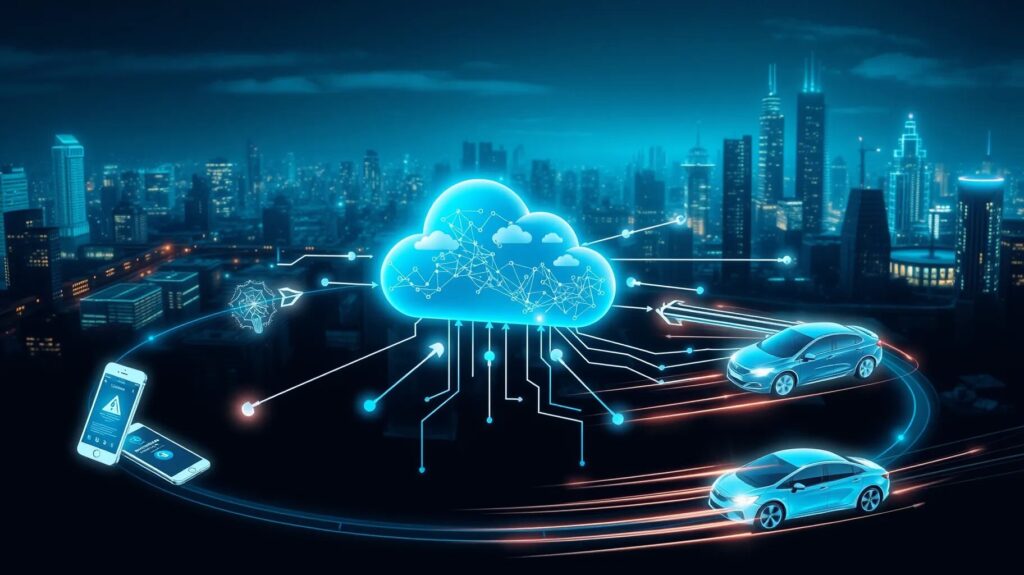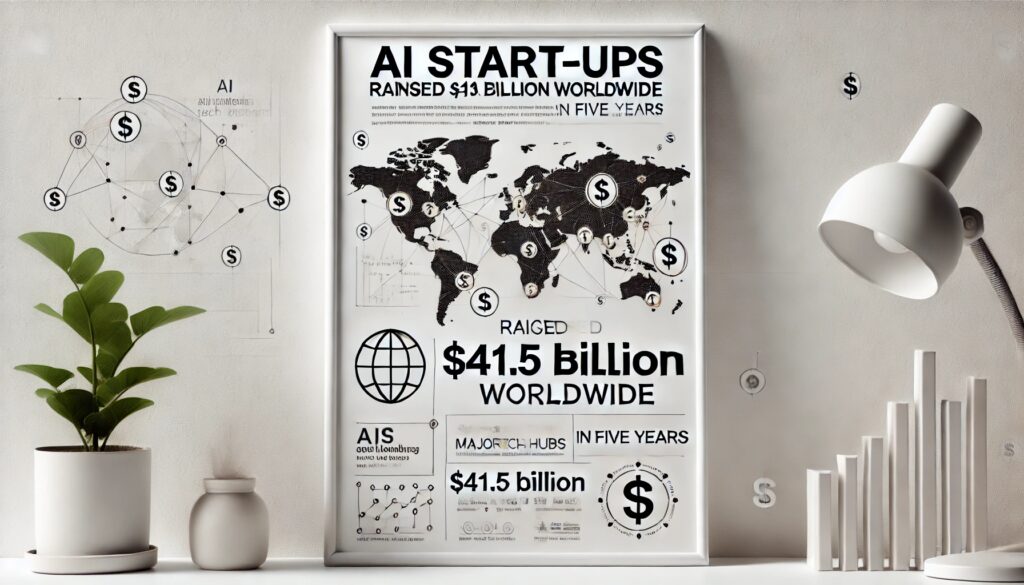
One of the most anticipated trends for 2024 is the seamless integration of cloud and edge AI.
This evolution is poised to transform industries by enabling AI-driven decision-making across centralized cloud platforms and distributed edge devices.
As businesses continue to leverage AI to improve efficiency, customer experiences, and automation, the synergy between cloud and edge computing will play a crucial role in scaling these applications effectively.
What is Cloud and Edge AI Integration?
The concept of integrating cloud computing with edge AI is all about distributing AI workloads across two environments. The cloud provides the computational power, storage, and large-scale data processing capabilities, while edge devices—such as IoT sensors, mobile devices, and smart cameras—run lightweight AI models for real-time processing. This combination allows organizations to take advantage of the scalability of the cloud and the low-latency benefits of edge computing.
Why is Integration Critical?
As more IoT devices and AI applications flood the market, it’s becoming clear that relying on the cloud alone can create performance bottlenecks. Edge AI helps address these by processing data locally, close to the source, which drastically reduces latency and improves real-time decision-making. Meanwhile, the cloud acts as a repository for large datasets, providing the necessary infrastructure for training and refining AI models.
This hybrid approach offers a best-of-both-worlds scenario—offloading heavy computation tasks to the cloud while keeping time-sensitive or bandwidth-sensitive tasks on the edge. In industries like healthcare, manufacturing, and autonomous vehicles, where split-second decisions can be life-altering, this kind of integration is vital.
Key Benefits of Cloud and Edge AI Integration
Reduced Latency: Edge AI can process data in milliseconds, making it ideal for real-time applications such as autonomous driving or smart cities. When combined with the cloud, the system can analyze and store large-scale data, offering businesses insights without latency concerns.
Optimized Bandwidth Usage: Instead of constantly sending raw data to the cloud, edge devices process data locally and only send key information back to the cloud, reducing the strain on network bandwidth.
Improved Scalability: Cloud computing provides infinite scalability, enabling AI models to train on massive datasets. Meanwhile, edge devices handle real-time inference, making the whole system more efficient as it scales.
Challenges in Integrating Cloud and Edge AI

While the integration of cloud and edge AI offers significant advantages, it doesn’t come without its challenges. Data security, privacy, and infrastructure management remain top concerns. Ensuring that sensitive information processed at the edge remains secure, especially in industries like finance or healthcare, is paramount.
Additionally, maintaining a seamless transition between cloud and edge environments requires robust infrastructure and real-time synchronization of data and AI models. The success of this trend depends heavily on advancements in network technologies, such as 5G, and improvements in edge computing hardware to handle more complex AI tasks locally.
The Future of Cloud and Edge AI in 2024
As we head into 2024, the push toward hyper-connected AI systems will only accelerate. The seamless integration of cloud and edge AI will allow businesses to unlock new capabilities, particularly in autonomous systems, smart infrastructure, and AI-powered industrial automation. Companies that can leverage this hybrid approach will be able to offer faster, more reliable AI solutions while managing costs and resources effectively.
The combination of cloud and edge AI is more than just a technological advancement—it’s a shift in how AI will be deployed globally, making real-time intelligence accessible at every point of a network, from central servers to the smallest connected device.
How Cloud and Edge AI Integration is Shaping Industries
The integration of cloud and edge AI is not just a technical evolution—it’s reshaping entire industries. As we step into 2024, this hybrid approach will drive innovation in sectors that rely heavily on real-time data processing, automation, and decentralized operations. Let’s explore how different industries are benefiting from this seamless interaction.
Smart Cities and Infrastructure
In smart cities, edge AI allows for real-time data collection and decision-making at critical points like traffic lights, public transport systems, and energy grids. By processing data at the edge, cities can respond instantaneously to changes in traffic flow, energy consumption, or environmental factors like air quality. The cloud acts as a central hub, analyzing trends and providing long-term insights, enabling cities to better plan infrastructure and optimize resources.
For example, smart traffic management systems that rely on edge AI can adapt traffic signals in real time, reducing congestion and emissions. At the same time, the cloud analyzes this data to inform future city planning and public transit improvements.
Healthcare: Personalized and Real-Time Care
In healthcare, the fusion of cloud and edge AI is driving significant advancements in telemedicine and remote patient monitoring. Edge AI allows for the processing of data directly from wearables and smart health devices, enabling real-time monitoring of patients’ vital signs. These devices can instantly detect irregularities in heart rate or glucose levels and alert healthcare providers or patients themselves.
The cloud, on the other hand, stores and analyzes vast amounts of patient data to support predictive healthcare models. This integration is especially valuable for chronic disease management and personalized treatment plans, as it provides a continuous loop of real-time data collection and long-term health insights.
Manufacturing and Industrial Automation
Industry 4.0 is seeing a major boost from the integration of cloud and edge AI. In smart factories, edge AI processes real-time data from sensors and machinery to make quick decisions on the production floor, improving predictive maintenance and minimizing downtime. For example, AI at the edge can predict when a machine is about to fail, allowing for immediate maintenance, which prevents costly production halts.
Meanwhile, the cloud serves as a repository for aggregating data from multiple factories, analyzing it to improve supply chain management, overall production strategies, and inventory control. This combined approach leads to more efficient, automated manufacturing processes, reducing waste and optimizing resource use.
The Role of 5G in Cloud and Edge AI Integration
One of the major catalysts for the successful integration of cloud and edge AI is the rollout of 5G networks. With their ultra-low latency and high-speed capabilities, 5G networks ensure that data can be transferred seamlessly between the cloud and edge devices, enabling real-time decision-making at unprecedented speeds.
This is particularly critical for industries like autonomous vehicles, where decisions need to be made in milliseconds. With edge AI processing data from sensors and cameras in real time and the cloud providing more complex analysis, 5G networks make this fast and reliable communication possible. Similarly, in smart cities, 5G allows for thousands of edge devices to communicate with the cloud almost instantaneously, making dynamic adjustments to traffic systems, public safety measures, and energy grids.
Enhancing Security with Cloud and Edge AI Integration
Security is often a concern when discussing cloud and edge AI integration, especially since both environments deal with sensitive data. However, this hybrid model also presents unique opportunities for improving data security. Edge AI can process and store data locally, reducing the need to send sensitive information to the cloud, which mitigates risks associated with data transmission.
At the same time, the cloud’s centralized control can enforce advanced security protocols and machine learning models that detect threats across the entire network, from edge devices to core servers. Combining both approaches allows for faster threat detection at the edge, while more complex security solutions are managed in the cloud.
Edge AI in Autonomous Systems and Vehicles
Autonomous vehicles and systems are one of the most high-profile use cases for cloud and edge AI integration. Edge AI enables autonomous vehicles to make split-second decisions, like identifying obstacles or calculating the safest route, without relying on a distant cloud server. This ensures that the vehicle can respond instantly to real-world conditions, such as avoiding a pedestrian or navigating through complex traffic.
Meanwhile, the cloud can store and process vast amounts of data from multiple vehicles, enabling fleet management, traffic optimization, and large-scale analytics. This interaction between cloud and edge AI ensures that autonomous vehicles can operate safely and efficiently, while also providing insights that help manufacturers improve their systems over time.
Scaling AI Operations with Cloud-Edge Hybrid Models
The cloud and edge AI integration not only enhances real-time processing but also allows businesses to scale AI operations efficiently. As organizations deploy thousands of edge devices across multiple locations, the cloud acts as a centralized hub for managing and updating AI models. Companies can train AI models in the cloud using large datasets, then deploy lighter versions of these models to edge devices for local inference.
This ability to scale means that businesses can introduce new features or updates quickly without having to overhaul their entire infrastructure. By leveraging both environments, companies can deliver agile and responsive AI services to a global customer base while managing costs and resources effectively.
Future Outlook: What’s Next for Cloud and Edge AI?
As we move deeper into 2024, the interaction between cloud and edge AI will only continue to evolve. With advances in AI hardware, 5G networks, and security protocols, this hybrid model will expand to more industries, offering faster, smarter, and more sustainable solutions. The Internet of Things (IoT), autonomous systems, and industrial automation will benefit the most as these technologies mature and become even more integrated.
In the future, we may see edge AI devices becoming more autonomous, relying less on the cloud for every decision, and using it primarily for model training and storage. Similarly, the cloud will continue to play a crucial role in aggregating, analyzing, and managing the immense amounts of data generated by edge devices, making AI-driven decisions more accurate and reliable across industries.
The seamless integration of cloud and edge AI will define the next era of AI, pushing the boundaries of what’s possible in real-time intelligence, efficiency, and scalability.
Resources
To dive deeper into the seamless integration of cloud and edge AI, here are some valuable resources to explore:
The Future of Cloud and Edge AI Integration – Gartner
Gartner provides insights on the emerging trend of integrating cloud and edge AI, along with predictions for its impact on industries in 2024 and beyond.
Gartner AI Reports
Edge Computing and AI: The Perfect Pair for Industry 4.0 – IEEE
This paper explores how edge computing combined with AI is revolutionizing industries, including manufacturing and healthcare, with real-time decision-making capabilities.
IEEE Xplore Digital Library
How 5G Enables the Future of Cloud-Edge AI – Qualcomm
An in-depth look at how 5G networks are accelerating the adoption of cloud and edge AI, with examples of applications in autonomous vehicles and smart cities.
Qualcomm Blog
Cloud and Edge Computing: A Comprehensive Guide – Microsoft Azure
This guide explains how businesses can implement hybrid AI solutions by leveraging the power of cloud and edge computing with Azure’s infrastructure.
Microsoft Azure Resources
Cloud and Edge AI for Real-Time Healthcare – Forbes
A business-focused look at how cloud and edge AI integration is transforming healthcare through remote monitoring and personalized medicine.
Forbes Technology
Securing Cloud and Edge AI Systems – McAfee
An article discussing the security challenges and solutions for cloud-edge AI environments, with best practices to safeguard data and operations.
McAfee Blog
AI and Edge Computing in Autonomous Vehicles – NVIDIA
NVIDIA’s exploration of how edge AI powers autonomous vehicles for real-time decision-making, while cloud AI handles fleet management and long-term analysis.
NVIDIA Research
Cloud-Edge AI in IoT and Smart Cities – Cisco
Cisco examines how cloud and edge AI are being deployed in IoT devices and smart cities for better infrastructure management, energy efficiency, and security.
Cisco Blog
The Role of AI in Smart Manufacturing – Deloitte
This report highlights how cloud and edge AI integration is enhancing predictive maintenance, real-time monitoring, and automation in manufacturing.
Deloitte Insights
AI and 5G: Unlocking Real-Time Edge Computing – Ericsson
Ericsson explores how the convergence of AI and 5G is enabling faster and more efficient real-time processing at the edge, especially in industrial applications.
Ericsson Insights





